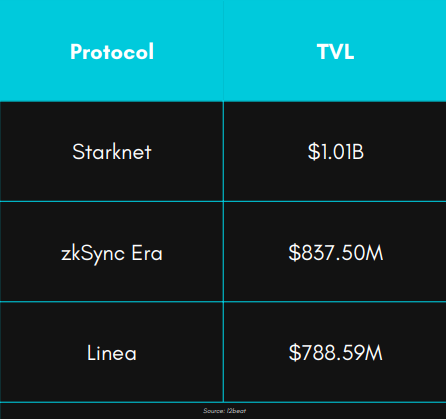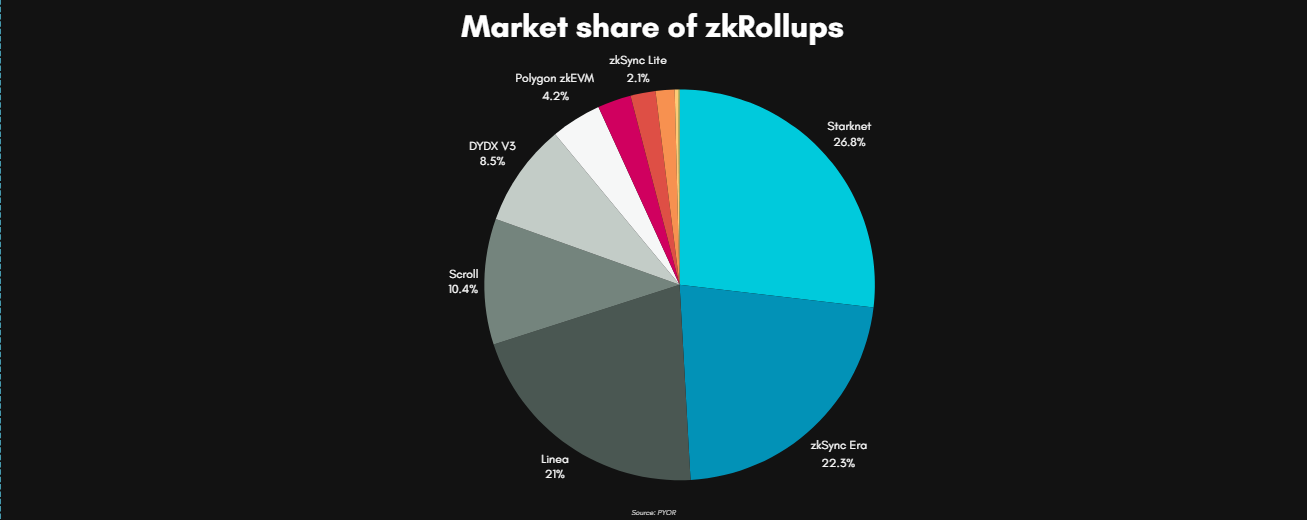
The Problem Solved By Rollups
Low throughput and high transaction fees is a long-standing problem for Ethereum. To address these issues multiple attempts have been made in the form of rollups. Rollups, popularly known as layer 2 solutions, tackle these problems by processing data and work related to multiple transactions of the main Ethereum chain and only submitting proof of the validity of processing to the main chain.
Transparency is one of the key features of public blockchains like Ethereum. This means every account and every transaction happening on Ethereum is publicly visible, which is kind of equivalent to everyone in this world having access to transactional information of the users’ bank accounts. Multiple studies show that it’s possible to link real-world entities to their on-chain identities. This is despite Ethereum using pseudo-anonymous addresses.
Privacy
Performance
Here is where Linea comes into the picture.
Linea is a Zero-Knowledge proofs-based rollup that aims to scale Ethereum by lowering its transactional cost and increasing the throughput.
Linea describes it as a blockchain that “leverages lattice-based cryptography to create zero-knowledge proofs that include every transaction performed on the network, and rolling them up to Mainnet. This ensures that every transaction is recorded to the Ethereum ledger while dividing the cost of that security by magnitudes.”
Optimistic rollups vs Zero-knowledge rollups
Two major types of rollups that are used by layer 2’s are Optimistic rollups and zk rollups.
Optimistic rollups
Optimistic rollups operate on the principle that transactions within a rollup are presumed to be valid unless a fraud-proof demonstrates otherwise.
Transactions are aggregated into a batch off-chain and processed by a group of validators off-chain. Subsequently, these transactions are submitted to the main chain in a condensed form.
Zk-rollups
ZK rollups utilize the advanced cryptographic method of Zero-Knowledge Proofs to confirm the validity of transactions before they are recorded on the main blockchain.
Linea uses ZK Rollups. There are several reasons behind it. ZK Rollups are generally better for applications where privacy, security, and fast transaction finality are crucial. They are particularly suited for financial applications, complex decentralized applications requiring high throughput, and scenarios where user data sensitivity is a priority.
Comparison of Optimistic rollups and Zk rollups

How does Linea work?
Here is the step-by-step transaction lifecycle on Linea.

Create Transaction: A user initiates a transaction. This is the starting point where the user's intent is captured, and the transaction is formulated.
Transaction Sent to Mempool: Once created, the transaction is sent to the mempool, which is a holding area for transactions waiting to be picked up by the sequencer.
Sequencer Retrieves Transaction from Mempool: The sequencer, a key component in the Linea architecture, retrieves the transaction from the mempool. The sequencer is responsible for ordering and processing transactions.
Transaction Validity Check: The sequencer checks if the transaction is valid. This involves verifying the transaction details such as the signature, nonce, and transaction data against the current state.
Transaction Processed by Sequencer: If the transaction is valid, the sequencer processes it. This means the transaction is executed, and the state changes are applied.
Sequencer Aggregates Transactions: Valid transactions are aggregated by the sequencer. This step involves grouping multiple transactions together for efficiency.
Sequencer Bundles Transactions into a Block: The sequencer bundles the aggregated transactions into a block. This is a crucial step as it prepares the transactions for the next phase of proof generation.
Generate Zero-Knowledge Proof for Block: The sequencer generates a zero-knowledge proof for the block. This proof verifies that all transactions in the block are valid without revealing the actual transaction data, maintaining privacy.
Sequencer Submits Proof and Compressed Block Data to Ethereum Mainnet: The sequencer submits the zero-knowledge proof along with the compressed block data to the Ethereum mainnet. This step is critical as it leverages the security of the Ethereum network while maintaining the efficiency of the Linea network.
Proof and Data Validity Check on Ethereum: Once submitted, the proof and data undergo a validity check on the Ethereum network. This is to ensure that the proof correctly corresponds to the block data and that all transactions are indeed valid.
Block Finalized on Linea Chain: If the proof and data are validated on Ethereum, the block is finalized on the Linea chain. This marks the successful completion of the transaction processing and state transition.
Transaction Confirmed: Finally, the transaction is confirmed, indicating that it has been successfully processed, validated, and recorded on the blockchain.
Block Rejected and Transactions Returned to Mempool: If the proof or data is not valid on Ethereum, the block is rejected, and the transactions are returned to the mempool. These transactions may be picked up again by the sequencer for reprocessing.
Comparison: Linea, Starknet, zkSync Era, Polygon zkEVM, Scroll

On-chain Performance
Linea's TVL increased impressively in the first few months of 2024. In February 2024, Linea's TVL was $174 million and by May 2024 it grew by 4x to reach $787 million.

This also makes Linea the third largest ZK-rollup on Ethereum by TVL after Starknet and Zksync Era.

Linea captured more than 21% market share among all the ZK-rollups, less than 10 months after the launch.

Linea also shows steady and impressive growth in terms of unique addresses. From the launch in July 2023, the average daily increase in unique addresses is ~19k with the highest increase recorded on March 31, 2024 which was 128k addresses. Currently, Linea has 5.9 million unique active addresses.

Both TVL and activity on Linea started increasing fast from February 2024, The primary reason behind this was the launch of Linea Alpha V2 mainnet. In Alpha V2 Linea introduced cost and performance optimization features like proof aggregation, data compression, and shift from individual hashes to merkle trees for L2 to L1 messaging anchoring.
On March 13, 2024 Ethereum went through a Dencun upgrade. The Dencun upgrade introduced concepts of “Blobs”. Blobs attach large data chunks to regular transactions. Blobs store data off-chain and it becomes inaccessible after three weeks, unlike call data, which is stored permanently. The main outcome with blobs is that it will reduce transaction cost on L2s by 90%.
Linea also started using blobs starting from March 26, 2024. And this lowered fees by 91%
• Avg Daily transaction cost on Linea before Blobs: ~$0.85
• Avg Daily transaction cost on Linea after Blobs: ~$0.07

Linea’s core stats are moving in the right direction. But that’s not all. Linea also has the benefit of massive distribution. We have seen examples of these in the past like with Binance and BNB chain and Coinbase and Base. Linea is bootstrapped by Consensys, the parent company behind Metamask and Infura. With a massive user base via Metamask, it won’t be a shocker if Linea becomes a top zk-Rollup and climbs to the top 5 rollups on Ethereum in the next year.
What do you think about Linea? Let us know in the comments.
PYOR Is An Interpretation Layer For Digital Assets. Go beyond the surface level with our data product XRAY. Check out XRAY → pyor.xyz.

